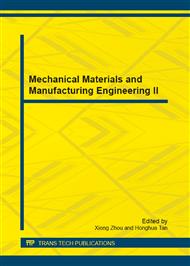p.91
p.95
p.101
p.107
p.114
p.119
p.124
p.129
p.133
Fatigue Damage Mechanism Experiments of the K-Joint of Offshore Platform Model
Abstract:
Ocean environment loads such as wave, current and wind load shows random distribution. The coupling of different kinds of load can easily lead to the fatigue damage of offshore platform structure. The damage presented the multiaxial characteristics would be formed in different directions and planes. K-joint is the key but weak part of the platform structure. This paper associated macro ocean environment factors with material interior micro structure change to reveal the microscopic mechanism of fatigue damage evolution and fatigue damage evolution regularity. By building finite element model of the offshore platform K-joint and physical model, an experiment is done under the function of wave and current load and makes a good result. In this way, the relationship between them and fatigue life was established, and the result agreed with the theoretical predictions.
Info:
Periodical:
Pages:
114-118
Citation:
Online since:
December 2012
Authors:
Price:
Сopyright:
© 2013 Trans Tech Publications Ltd. All Rights Reserved
Share:
Citation:


